
Preview Material for
Exam 2 Spring 2002
Print
the PDF version (no pictures, better printing)

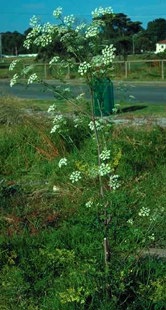
source
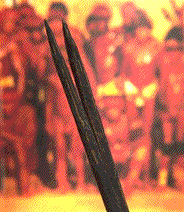

source

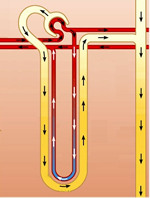
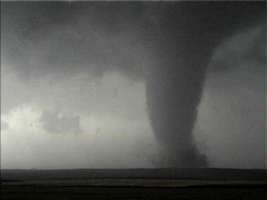

source
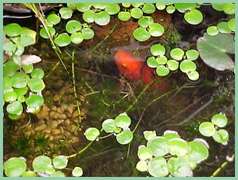
source

Preview Material for
Exam 2 Spring 2002 |
||||||||||||||||||||
 |
||||||||||||||||||||
| The tobacco (Nicotiana tabacum) plant is native to the New World and was smoked, chewed and snuffed by native peoples at least one thousand years before Columbus landed here. Cigarettes are produced from dried shredded leaves. Leaves to be used as cigar wrappers are produced by plants grown under cheesecloth where the high humidity and low light intensity promote the development of larger and thinner leaves than those used for cigarettes. Tobacco leaves synthesize large amounts of a secondary compound called nicotine. Nicotine affects the human nerve system. It binds to the receptors of the neurotransmitter acetylcholine and thus mimics its activity. Nicotine is also a potent insecticide. | ||||||||||||||||||||
 source |
||||||||||||||||||||
| Poison hemlock (Conium maculatum) is one of the most recognized botanicals in ancient medicine because of its association with the death of Socrates. It is a tall, highly branched plant that produces white flowers. The stems are typically covered with purple blotches. As a medicine, hemlock has been used (in small doses) as a sedative and an anticonvulsion compound. In larger doses it can result in paralysis or death, not only to humans, but horses, cattle, sheep, and other domestic animals that consume the plant. The most toxic component in hemlock is coniine, an alkaloid. | ||||||||||||||||||||
 |
||||||||||||||||||||
 source |
||||||||||||||||||||
| Surgery has improved immensely since the 19th Century, partially due to the specialty of anesthesiology. Surgeons learned early that an operation was often more successfully if the patient's neck muscles were completely relaxed. In fact, an effective muscle relaxant is curare, the same poison applied by Amazonian Indians to the tips of their hunting spears. Indeed, if your anesthesiologist carefully applied curare to his mix of chemicals, your throat muscles will become partially paralyzed, making tracheal tube insertion quite easy prior to the operation. | ||||||||||||||||||||
 |
||||||||||||||||||||
| You are teaching a middle school biology class and have assigned the students to prepare terraria to simulate a natural ecosystem that demonstrates the interdependence of respiration and photosynthesis. The terraria are prepared from old soda bottles. Most of the student groups choose Coca-Cola (clear plastic) bottles to enclose their terraria, but one group chooses a 7-Up bottle made of transparent green plastic. Each terrarium is supplied with lush green fern plants and one small herbivorous chameleon and is sealed from the outside environment and placed in a sunlit windowsill. The temperature within all terraria is kept constant. | ||||||||||||||||||||
 |
||||||||||||||||||||
 |
A tornado briefly touches down at the edge of a lake and transports a number of mosquito fish to a much smaller pond that had not previously been inhabited by fish. Due to a nearby salt mine, the new pond has a slightly higher salinity than the original lake. Also, the new pond doesn't have as many different kinds of plants that grew in the original lake. (NOTE: All of the fish transported were adults that have reached their full size). Some of the fish survived in the new pond. When examined, these fish were found to have slightly longer nephron loops than those of the fish that died. | |||||||||||||||||||
 source |
||||||||||||||||||||
 source |
||||||||||||||||||||
| In the new pond, there is a plant species that floats near the surface and provides a good place for the mosquito fish to hide from predators. Some fish inhabit the plants that are closest to the surface of the pond and some prefer those at lower depths. The fish closer to the surface feed on single-celled organisms and those at greater depths feed on different organisms. | ||||||||||||||||||||